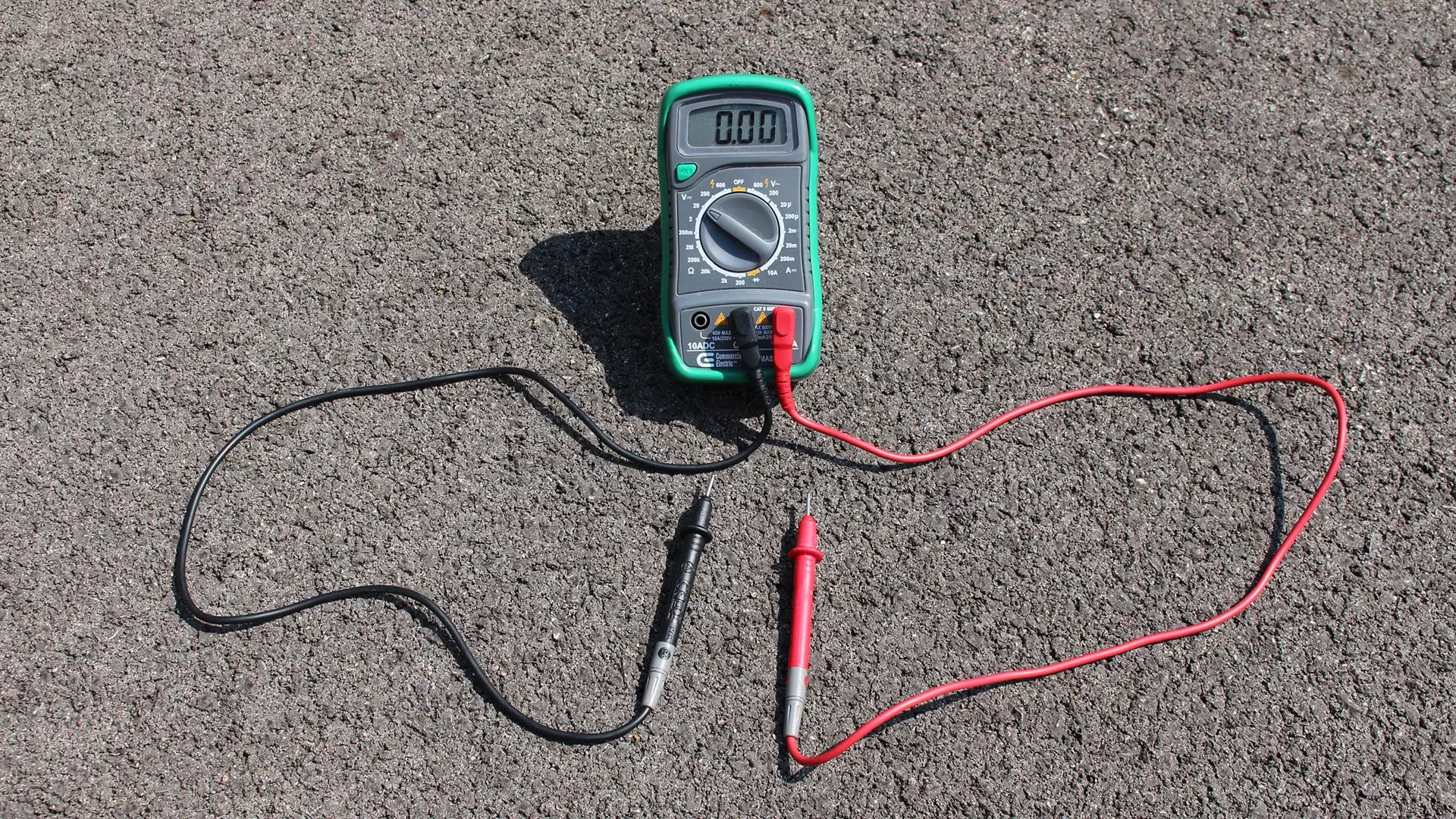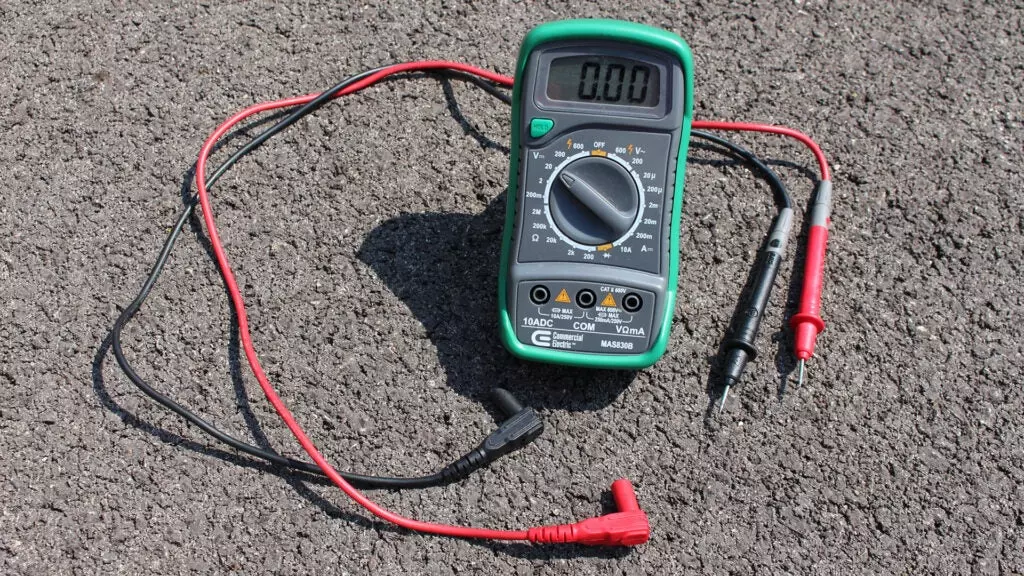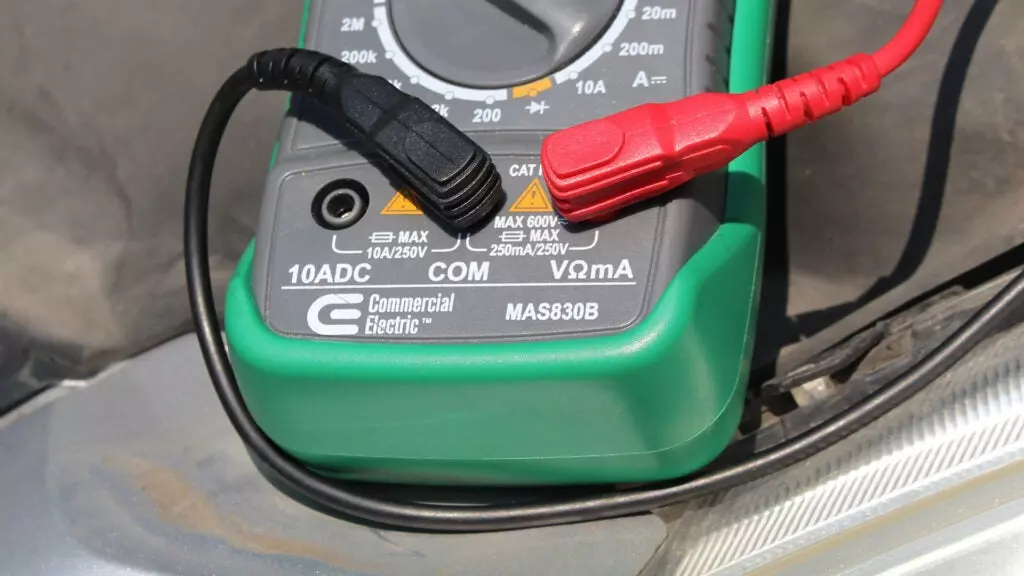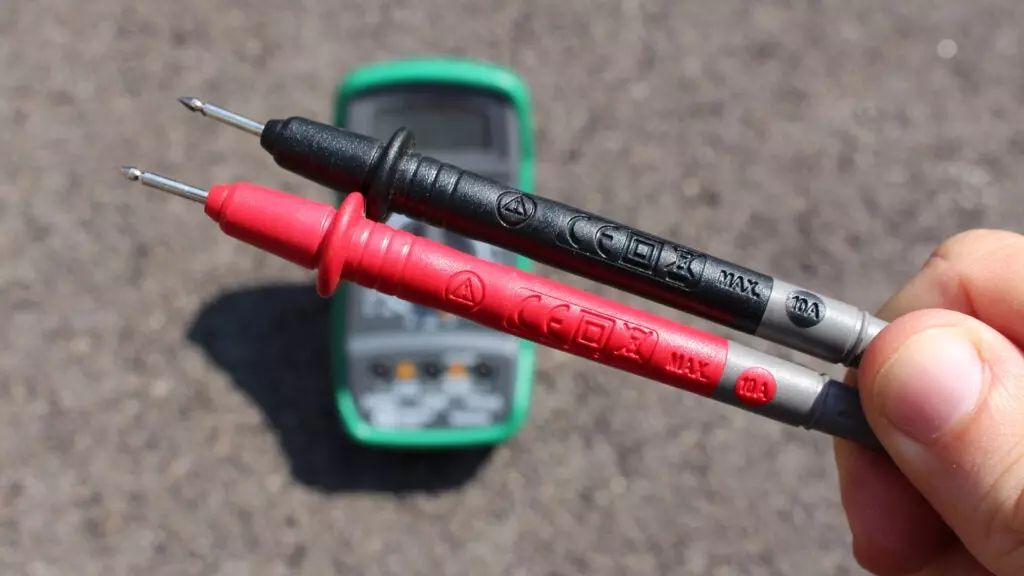Time Needed: Depends on project, Difficulty: Beginner-intermediate, Cost: $10-$50
Your dashboard lights have gone out. There’s a weird buzz coming from your radio. Your automatic wipers have gone on the fritz. Or, just maybe, every electrical component in your car refuses to start. Where do you start diagnosing the issue? The first step is to grab a multimeter.
A multimeter is a small electrical device that measures a host of electrical variables such as voltage, current, and resistance, and can help diagnose what’s wrong with a certain electrical circuit or component. To use one, however, can seem complicated and potentially dangerous for the novice. It doesn’t have to be. Follow along and let Car Autance’ crack editors walk you through general guidelines for how to use a multimeter.
Ed. Note: Updated with new and additional text on 6/21/2021 by Tony Markovich.
Types of Multimeters and Electrical Meters
How you use your meter will slightly change depending on which type you have. Below, we discuss the primary types of electrical meters you will come across.
Digital Multimeter
This is the type of meter you see in the photos presented on this page. It has a screen up top, a rotating dial on the body, and three ports/connections for probes at the bottom. The primary difference between digital and analog multimeters is how the information is displayed. A digital multimeter reads out on a small digital screen, which makes the device simpler, easier to use, and more precise.
Analog Multimeter
In contrast, analog multimeters do not have digital screens. Instead, the readings are displayed by a hinged needle and a scale.
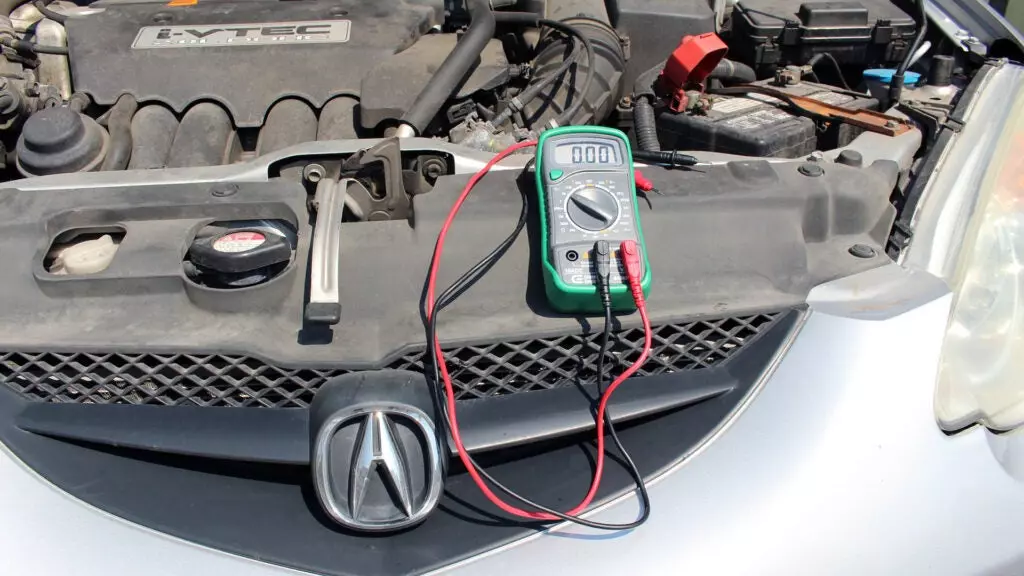
Clamp Meter
Although some clamp meters will have probes on them, the primary part of the tool is the clamp at top. This clamps directly on/to a circuit, which is slightly different from how a multimeter works. Whereas the two probes on a multimeter open the circuit and operate in series with the circuit, using the clamp keeps the circuit closed and puts it in parallel with the circuit.
A clamp meter is often chosen over a multimeter because it could be quicker and it could be safer. With a multimeter, you might be required to power down the circuit, physically open the circuit up to create access for the probes, then power it back up. With the clamp, the meter attaches directly onto the wire/cable and circuit while it’s still powered on. Because you don’t have to open the circuit, many consider this a safer option. Furthermore, clamp meters can also often handle more amperage, though that’s not always the case.
Bonus: Non-Contact Voltage Tester/Test Light/Electricity Test Pen
Non-contact voltage testers, which are known by numerous other similar names, look like squarish often-yellow pens with dull pointed tips. It’s the thing people use to test strands of Christmas lights that aren’t working. With simple constructions and no read-out displays, test pens simply detect if there is voltage. This is done by placing the tip of the tester on the wire, and if it detects a signal, it will light up and sometimes make a noise.
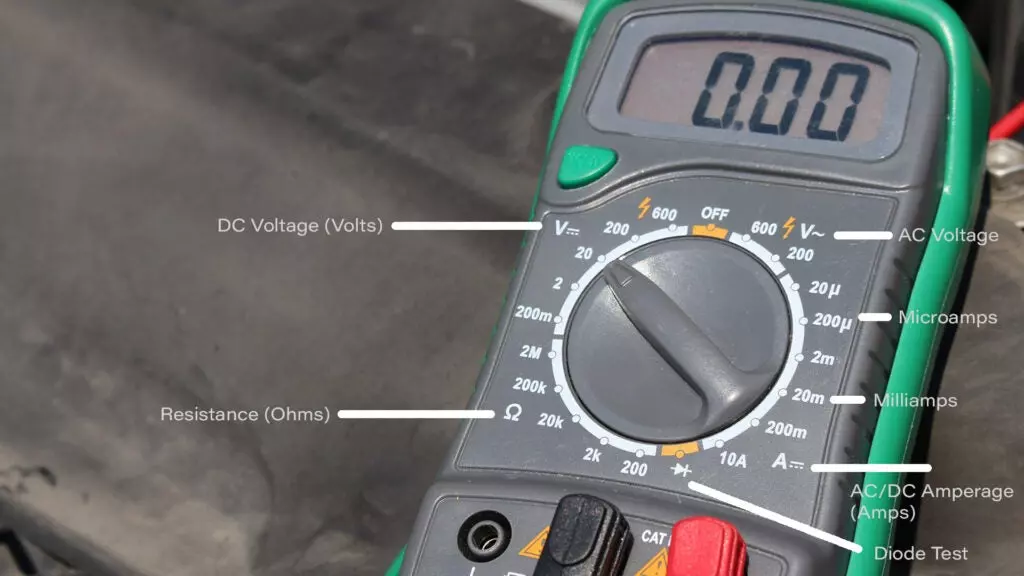
Understanding What a Multimeter Does and How It Works
Here’s how to use a multimeter to diagnose what’s wrong with your vehicle’s electrical components.
There will be multiple settings on the multimeter, including voltage, current, capacitance, continuity, and resistance. These settings are put to use by rotating the dial that is typically located at the center of the multimeter.
As a mechanic, you can use these settings to help pinpoint the issue with your vehicle’s electrical components. Common points of testing include wires and cables, relays, and batteries, but you can essentially use a multimeter to test anything that has current electricity running through it.
Volt
Measures how much electricity is getting pushed into a circuit from the battery.
Resistance
Resistance is how difficult it is for electricity to flow through a circuit.
Current
Current is how much electricity is flowing through the circuit from the battery.
You’ll also see symbols denoting Alternating Current and Direct Current, which you’ll use depending on the type of current used in each part’s particular circuit. And lastly, there’s a Continuity Check symbol, which looks like the WiFi symbol, denoting whether or not a circuit is connected.
Lastly, there are two wires connected to probes. They are:
Red Probe/Lead
The red probe/lead is meant for the positive electrical output.
Black Probe/Lead
The black probe/lead is meant for the negative electrical output or ground.
General Use of the Probes
Your settings will depend on what you’re testing for, but the process remains the same:
- Adjust the multimeter to the predetermined settings of voltage, current, capacitance, continuity, or resistance.
- Adjust the multimeter’s specific voltage, current, capacitance, continuity, or resistance settings to the specific number setting to what you’re testing, i.e. 20v, 200v, or 1000v. For example, because testing a battery requires readings up to approximately 15 volts, select 20 volts.
- Attach the multimeter’s leads to their corresponding electrical connections. Let the multimeter do its job and view the reading on the screen.
Pro Tip: If you notice the reading has an unexpected negative reading, you might have the probes crossed. Switch them, and the reading should return to a regular positive reading.
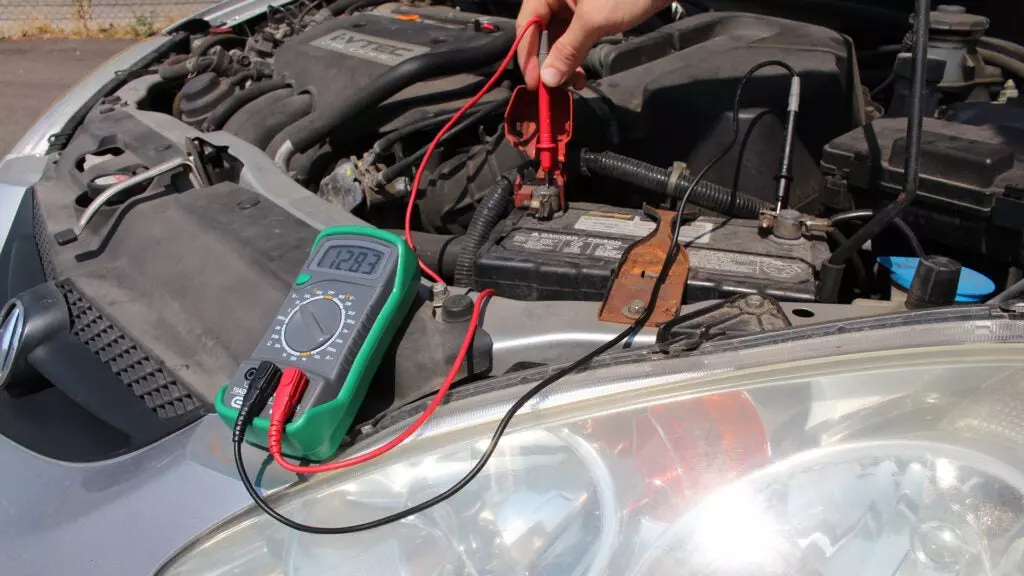
The Safety Brief
We want you to exit the garage in the same condition in which you entered. There’s no need for safety to come third, make it first. To ensure your skin stays unblemished and your bones intact, you’ll want to use non-conductive mechanics gloves and a set of safety glasses. When working with electricity, it is crucially important to know what does or doesn’t have power and to be aware when that power is on. Do not work with stray/fraying wires while the power is on. You definitely don’t want to get shocked.
The Tools & Parts You Need
A trip to the auto parts store or waiting on your porch for Amazon can be a time-suck. Don’t spend the day twiddling your thumbs waiting for a package or driving to and from the store.
Prepare for your jobs by researching what you need and buying the proper tools ahead of time. To follow along today, you’ll need the following:
The Task: Basic Instructions for Checking a 12V Car Battery With a Multimeter
Testing a car battery gives you the basic idea of one way a multimeter works. In this case, you are looking for voltage to make sure the battery is producing enough power output.
- Park the car in a safe place out of the way and let it cool down.
- Pop the hood, locate your battery, and remove any terminal covers.
- Plug the probes into your multimeter and remove the tip caps.
- Turn the multimeter dial to voltage and make sure it’s set to at least 20 volts.
- Place the red (positive) probe tip on the red (positive terminal) and the black (negative) probe tip on the black (negative) terminal. Make sure the tips are touching metal.
- The multimeter should read close to 12.6 volts when the car is off. If it is showing a number below that, the battery likely needs a recharge or should be replaced. When the vehicle is running, it will likely sit in the 13-14ish range.
- To test the battery’s cold cranking capabilities, turn the car on with the probes still connected or touching the terminals. The battery should not drop or dip below 10 volts when the vehicle is started. If it doesn’t, the battery should be in good condition. If it does, it might be time for a replacement due to the risk the battery might not be able to start your vehicle.
The Questionnaire
Car Autance answers all your burning questions.
Q. How do you check if a multimeter is working?
A. If you’re talking about basic power, just turn the dial to see if the digital display turns on. If you’re talking about actual measurements, do a quick battery check to look for anything unusual or out of sorts. For other measurements, perform your test/check on a known entity that you are certain has a specific voltage, resistance, or amperage.
Q. What does OL mean on a multimeter?
In general, when testing continuity, a reading of “1.” or “OL” means it is an open loop and there is no continuity. When testing voltage, OL means overload and suggests the voltage is more than the multimeter can read in that specific setting.
Q. What is the hold button for on a multimeter?
A. When you press the hold button during a reading, it captures and keeps that reading on the screen. When you press it again, it releases the reading.
Q. Can a multimeter explode?
A. If you use a meter or probe/lead that isn’t rated for your specified use, then yes, it can. It is, however, extremely uncommon and unlikely.
Learn More From This Video Tutorial on Using Multimeters
Car Autance’ editors understand that not everyone is a text-based learner. For those kinesthetic people out there, we have your back with a video showing you exactly how to use a multimeter. We pulled it from one of our most trusted sources and it’s a great additional resource.
Our Favored Multimeters
You can buy electrical tools at almost every auto parts and home improvement store, as well as online stores like Amazon. To help you get through weird electrical glitches, you should definitely have a multimeter. For professional applications, the more-expensive options from Fluke are nice, but casual home mechanics don’t need something that pricey. Look for something between $20-50 like these options from Klein Tools or Innova.
Disclosure: Carbibles.com is also a participant in the Amazon Services LLC Associate Programs, an affiliate advertising program designed to provide a means for sites to earn advertising fees by advertising and linking to Amazon.com. Pages on this site may include affiliate links to Amazon and its affiliate sites on which the owner of this website will make a referral commission.
